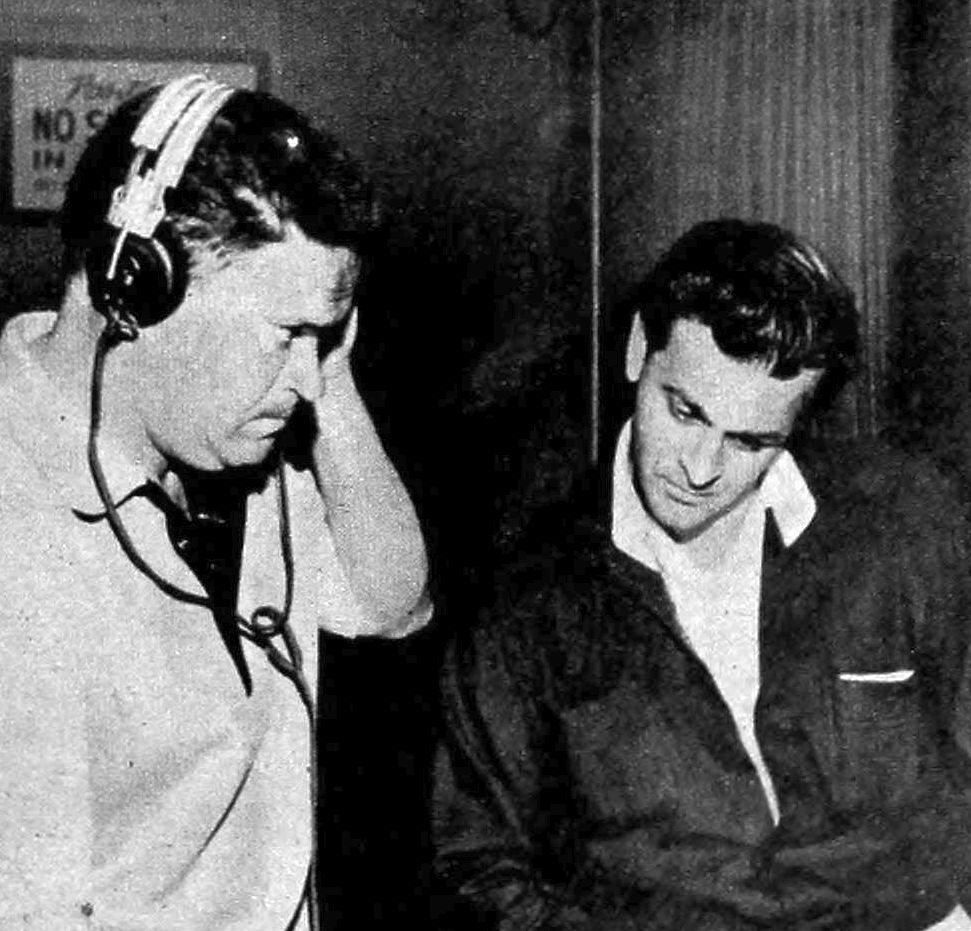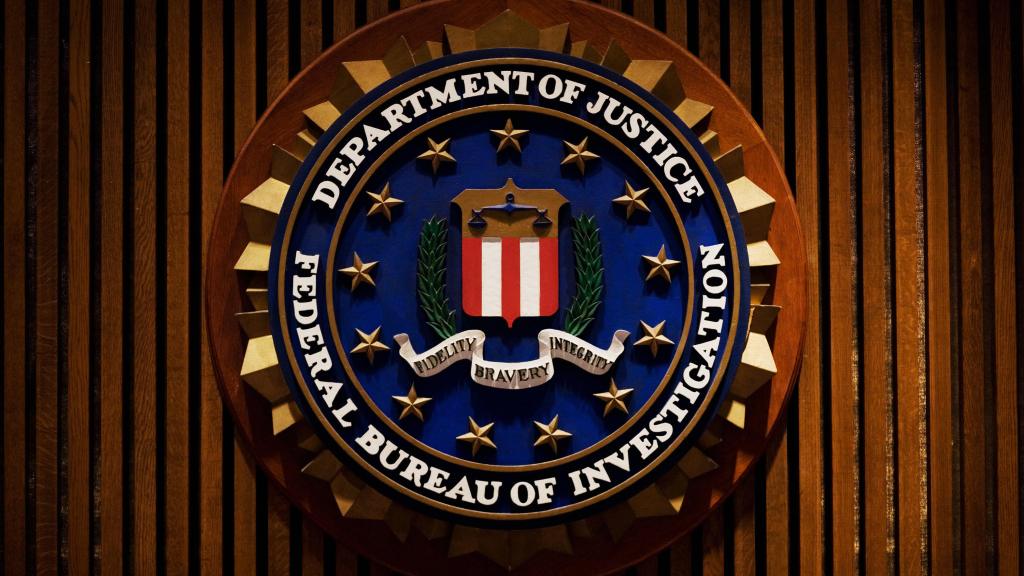“…the official broadcast from the files of the Federal Bureau of Investigation…”
Posted by Ivan G. Shreve, Jr. on Apr 6th 2019
Author Frederick Lewis Collins’ book The FBI in Peace and War became such a huge best seller in 1943 that a radio adaptation premiered the following fall. The series was created by Louis Pelletier and directed-produced by Max Marcin, who was also bringing audiences Crime Doctor every week. You’d think that such a series—which was heard over CBS from 1944 to 1958—would number Federal Bureau of Investigation head J. Edgar Hoover among its fans. I mean—you can’t buy that kind of publicity.
But G-man J. Edgar…well, he purportedly wasn’t enamored of Peace and War. Instead, Hoover chose to bestow his personal stamp of Bureau approval to a rival series that premiered over ABC Radio on this date in 1945. “It is my sincere hope that the broadcasts will enable you to know more about how to cooperate with your local police officials and every branch of law enforcement in your community,” Hoover stated at the time of This is Your FBI’s debut. “I also hope that you will come to know your FBI as a group of men and women who seek no personal glory, and who are part of a great team serving you, your family, and the nation.”
This is Your FBI was created by director-producer Jerry Devine, who began his radio career as a comedy writer for personalities like Kate Smith and Tommy Riggs before turning to radio dramas like Mr. District Attorney. Devine was given carte blanche by J. Edgar to access closed case files from the Bureau as material for This is Your FBI’s scripts. In return Hoover used the show as both publicity and a recruiting tool for future Feds (he raved about the show as “the finest dramatic program on the air”). Using the Hoover-approved material gave FBI a true air of authenticity, though each weekly broadcast had that now-familiar disclaimer: “All names used are fictitious and any similarity thereof to the names of persons or places, living or dead, is accidental.” (Author Jim Cox, in his book Radio Crime Fighters, mused in his write-up on FBI: “Some listeners must have pondered that for a while—‘So did these events happen or not?’”)
In the early years of This is Your FBI, the program originated in New York…and as such, utilized Big Apple radio talent like Mandel Kramer, Karl Swenson, Santos Ortega, Elspeth Eric, and Lesley Woods. Future Night Beat reporter Frank Lovejoy also appeared on the series as both a player and the show’s original announcer. (He would be replaced by Dean Carlton from 1946 to 1947.) When FBI relocated to the West Coast in 1948, the series tabbed actor Stacy Harris to portray Special Agent Jim Taylor, who represented all of the Bureau’s operatives. Harris would be supported by many of “Radio Row’s” veterans: William Conrad, Parley Baer, Georgia Ellis, Bea Benaderet, Herb Ellis, etc.

William Woodson became This is Your FBI’s new announcer with the West Coast migration, and his authoritarian voice would soon become associated with law enforcement-themed films like Down Three Dark Streets (1954; Woodson also played a professor in the film) and Cell 2455 Death Row (1955). In later years, Bill would enjoy an association with the 60s cult TV series The Invaders (doing voice work) and the Saturday morning cartoon favorite Super Friends (“Later…at the Hall of Justice…”). (Woodson’s tones will also be familiar to WKRP in Cincinnati fans as the voice who introduced Les Nessman’s newscasts.) The This is Your FBI announcer who did the show’s Equitable Life Assurance Company commercials (the show’s longtime sponsor) at this time may also sound familiar. It’s actor Larry Keating, who later played George Burns and Gracie Allen’s next door neighbor Harry Morton on their TV sitcom (and Roger Addison, neighbor to a certain talking equine on the even later Mister Ed).
This is Your FBI provided memorable entertainment from its debut to its final show on January 30, 1953. Special Agent Taylor took on all criminal comers: embezzlers, hijackers, con men, and fraudsters of all shapes and sizes. The fictional Taylor was encouraged by the real-life J. Edgar Hoover, who squeezed every drop of publicity he could from the series (much as he would later do with the 1965-74 TV show The F.B.I.). Hoover gave the show’s creator Jerry Devine VIP tours of Bureau facilities and kept him in the loop on the latest leaps in technology used by the Feds in their law enforcement pursuits.

The FBI in Peace and War may have been the higher-rated program (it certainly had a more memorable theme song in Prokofiev’s Love for Three Oranges) but surviving broadcasts of This is Your FBI demonstrate that it was clearly the superior series. (Plus, more of its broadcasts have managed to survive compared to the output of Peace and War.) We hope that you’ll agree and purchase a copy of National Security, an 8-CD collection of early episodes from the program’s New York years. This…is Your FBI!

